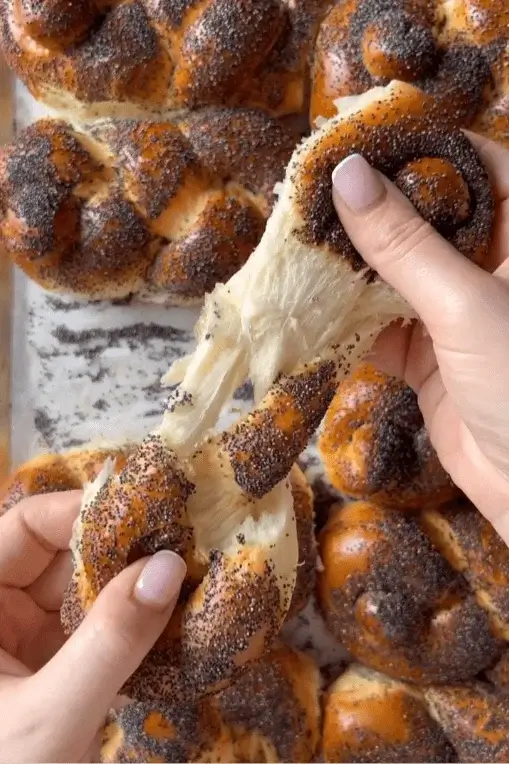Braided Challah Rolls for Shabbat
We may earn a commission from recommended products, at no extra cost to you. See Disclosure.
INGREDIENTS
For 20 rolls:
- 2.2 pounds/1 kilogram all-purpose flour
- 2 tablespoons/20 grams dry yeast, or 2 ounces/60 grams fresh yeast
- ½ cup/100 grams sugar
- ¾ cup/180 milliliters oil
- 2 cups/500 milliliters lukewarm water
- 1 tablespoon/15 grams salt
Toppings:
- 1 egg, beaten
- Sesame seeds and/or poppy seeds
INSTRUCTIONS
- In a stand mixer fitted with the dough hook, sift the flour and add the yeast and sugar. Mix on low speed. Slowly drizzle in the oil and water, then add the salt. Continue kneading for 10 minutes, until the dough is smooth and elastic.
- Transfer the dough to a greased bowl, cover with a kitchen towel or plastic wrap, and let it rise at room temperature for 1 hour, or until doubled in size.
- Set your oven to 350°F (175°C) with convection/turbo mode, if available.
- Divide the dough into 20 equal pieces. Roll each piece into a long rope. To braid: Bring one end of the dough strip to the center. Loop the other end through the hole created, and flip the second loop and thread the remaining end through, letting it peek out slightly.
- Arrange the rolls on a parchment-lined baking sheet. Cover and let them rise for another 30 minutes.
- Brush each roll with beaten egg and sprinkle with sesame or poppy seeds.
- Bake for 25 minutes, or until deeply golden. Check that the bottoms are golden brown before removing.
- Let the rolls cool before serving. Enjoy fresh, or freeze for later. To reheat, warm in a low oven 120°F (50°C) until soft and fragrant.
RECIPE NOTES
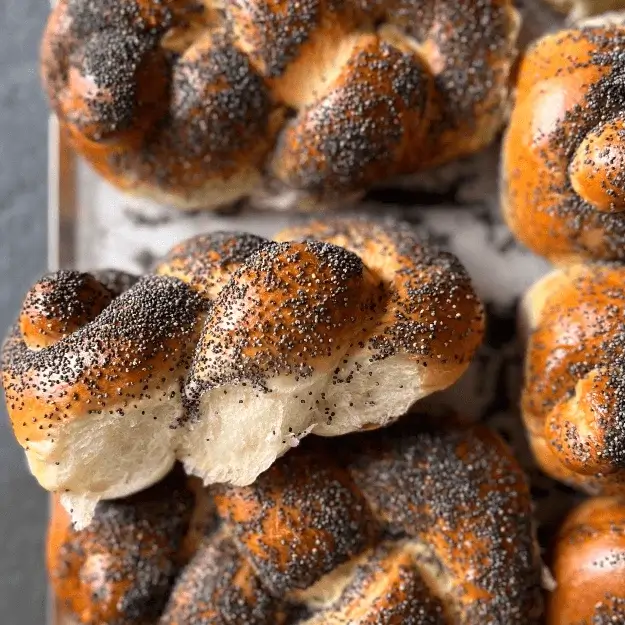
FAQ
Can I use whole wheat flour for these challah rolls?
Yes, but it will affect the texture and rise of the challah rolls. Whole wheat flour absorbs more liquid than all-purpose flour, making the dough denser. To maintain softness, replace only 25–50% of the flour with whole wheat. If using 100%, add an extra tablespoon of water per cup of flour to prevent dryness. Whole wheat dough takes longer to rise, so allow extra proofing time. Adding a tablespoon of vital wheat gluten can improve elasticity. The final challah rolls will have a nuttier flavor and be slightly denser, but they will still be soft and delicious.
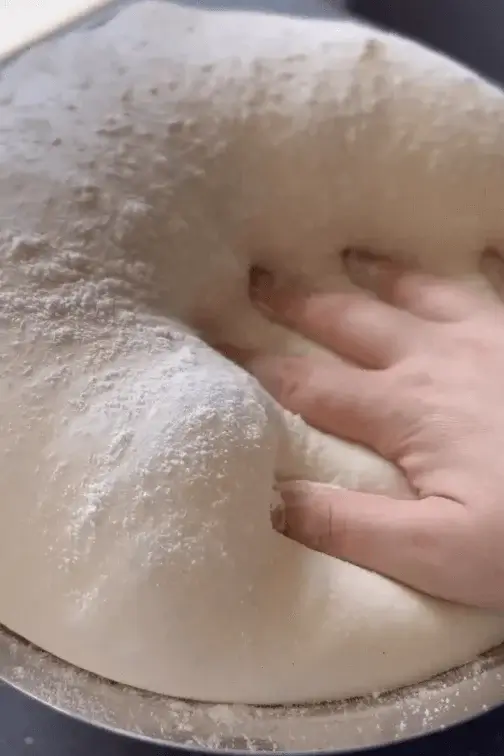
How do I store these challah rolls to keep them fresh?
Refrigerating the dough overnight enhances flavor and texture by allowing slow fermentation. After kneading, place the dough in a greased bowl, cover with plastic wrap, and refrigerate for up to 12 hours. Before shaping, let it sit at room temperature for an hour to soften. Cold dough may take longer to rise after shaping, so allow extra proofing time before baking. This method develops a more complex flavor and can be convenient for busy schedules. Be careful not to let the dough overproof in the fridge, as this can cause it to collapse when baked.
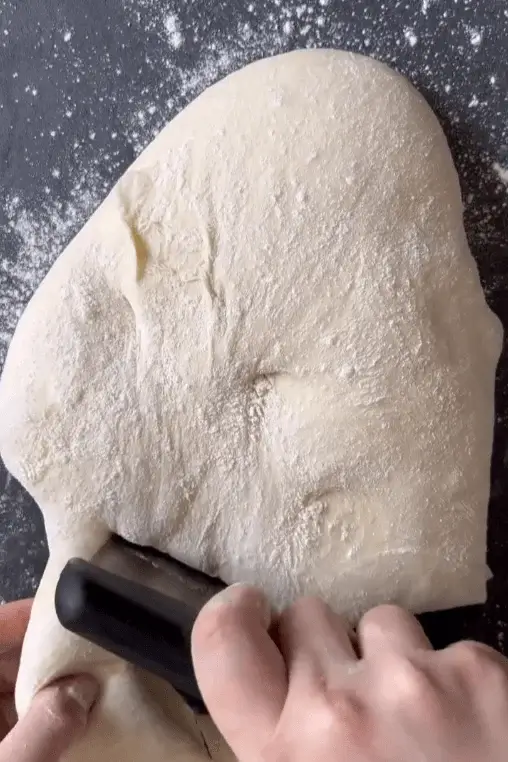
What is the best way to reheat frozen challah rolls?
The best way to reheat frozen challah rolls is in the oven. Preheat to 300°F (150°C), place the frozen rolls on a baking sheet, and cover them loosely with aluminum foil to prevent excessive browning. Heat for 10–15 minutes until warmed through. For a crispier crust, remove the foil for the last few minutes. Avoid microwaving, as it can dry out or toughen the rolls. If in a hurry, wrap a roll in a damp paper towel and microwave for 20–30 seconds, but this may soften the crust too much. Oven reheating best preserves the texture.
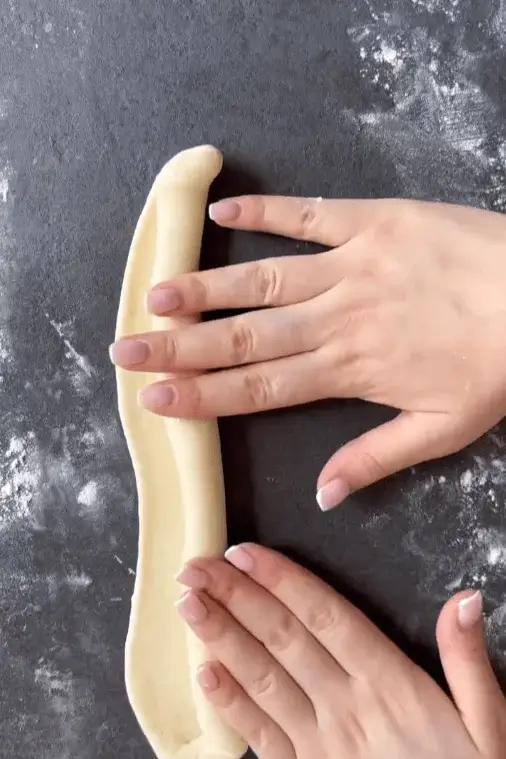
How can I make the challah rolls softer and fluffier?
For softer, fluffier challah rolls, knead the dough well to develop gluten, which creates elasticity. Use bread flour instead of all-purpose for better texture. A slightly sticky dough is ideal, so avoid adding too much flour. Adding an extra egg yolk, milk, or butter increases tenderness. Ensure proper proofing; under-risen dough results in dense rolls. Let the challah rolls cool under a towel after baking to retain moisture. Brushing with melted butter after baking also enhances softness. Finally, avoid overbaking—check for a golden brown color and ensure they sound hollow when tapped on the bottom.
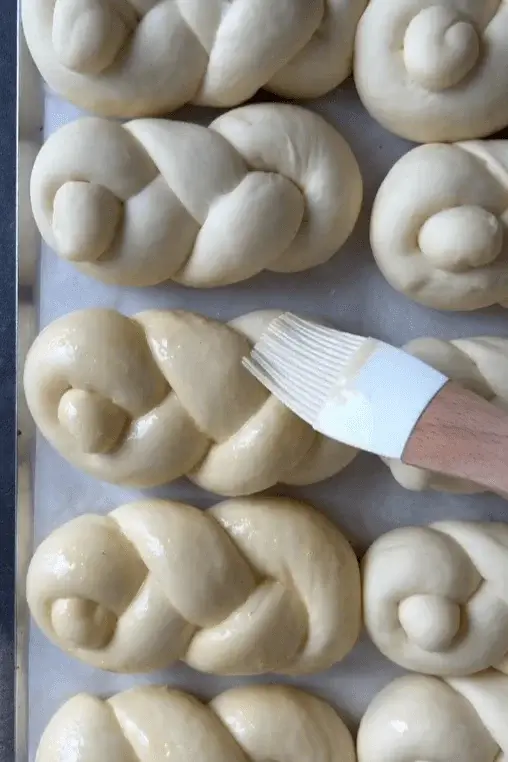
Can I add honey instead of sugar for a richer flavor?
Yes, honey can replace sugar, but adjustments are needed. Use about ¾ of the sugar’s amount, as honey is sweeter. For example, if the recipe calls for ½ cup (100 g) of sugar, use about ⅓ cup (80 g) of honey. Reduce the water slightly to balance the extra liquid from the honey. Honey adds depth of flavor and keeps the rolls moist. Since honey caramelizes faster than sugar, monitor the rolls while baking to prevent over-browning. Lighter honey varieties work best, as darker ones may overpower the flavor. Expect slightly softer rolls with a subtle sweetness.
How do I know if my yeast is still active?
To check yeast activity, dissolve it in warm water (100–110°F or 38–43°C) with a teaspoon of sugar. Let it sit for 5–10 minutes. If it becomes foamy and bubbly, it is active. If nothing happens, the yeast is likely expired. Always store dry yeast in an airtight container in the fridge or freezer to prolong its shelf life. Fresh yeast should be refrigerated and used within a few weeks. Old or improperly stored yeast will not rise properly, affecting the dough. If uncertain, always test the yeast before adding it to the flour to avoid failed dough.
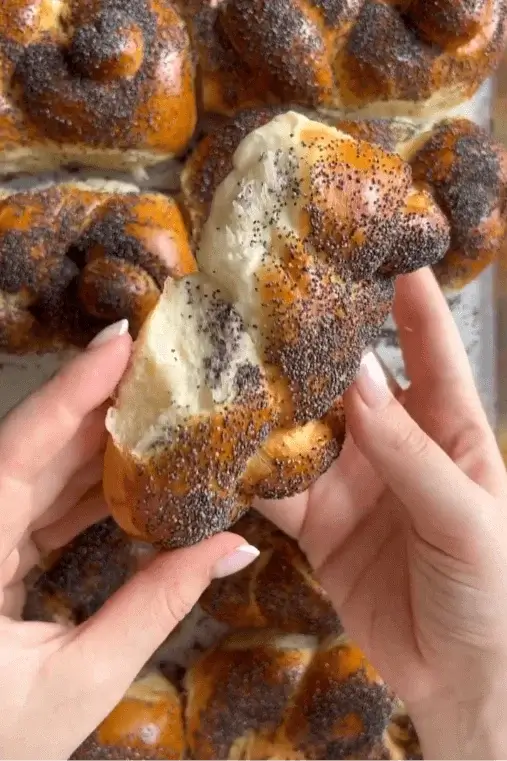
Can I knead the dough by hand?
Yes, kneading by hand is possible but requires more effort. Start by mixing ingredients in a large bowl until a shaggy dough forms. Transfer to a floured surface and knead for 10–15 minutes. Use the heel of your hand to push and stretch the dough, then fold it back. Repeat until the dough is smooth and elastic. If it’s too sticky, use minimal flour to prevent drying. Hand-kneading helps develop gluten, giving the rolls structure. The dough is ready when it passes the “windowpane test,” where a small piece stretches thin without breaking.
Why didn’t my dough rise properly?
Several factors can affect dough rising. Expired yeast will not activate, so always check it beforehand. Water temperature should be between 95°F and 110°F (35°C to 43°C); too hot can kill the yeast, while too cold slows activation. Excess salt can inhibit yeast growth, so avoid direct contact between yeast and salt. A dry dough with too much flour prevents proper rising. Cold room temperatures slow fermentation; placing the dough in a warm spot, like an oven with the light on, can help. If all conditions are correct but no rise occurs, try proofing the yeast separately first.
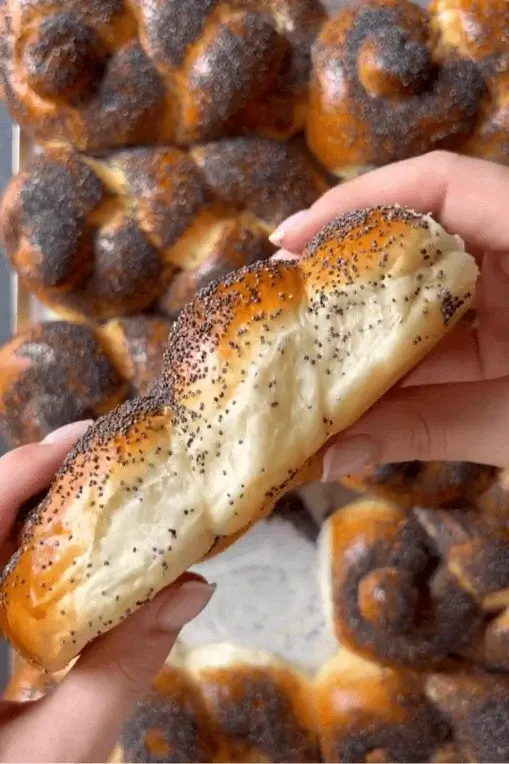
Can I make these challah rolls gluten-free?
Yes, but the texture will be different. Use a high-quality gluten-free flour blend containing xanthan gum or add 1 teaspoon of xanthan gum per cup of flour to improve elasticity. Gluten-free dough is stickier, so handle with lightly oiled hands. Since it doesn’t rise as well, allow extra proofing time. Egg and butter additions improve softness. Rolls may be denser and more crumbly than traditional challah. Bake at a slightly lower temperature to prevent dryness. For best results, use a recipe designed specifically for gluten-free challah rolls, as adaptations may not yield the same structure.
What should I do if my dough is too sticky?
If the dough is too sticky, avoid adding too much flour, as this can make the rolls dense. Instead, lightly flour or oil your hands when handling it. Kneading longer can also help develop gluten, making the dough more manageable. If the dough is excessively wet, add flour a tablespoon at a time until it becomes easier to work with. Chilling the dough for 15–20 minutes can also help firm it up. Using a bench scraper to lift and fold sticky dough instead of over-flouring prevents drying it out.
